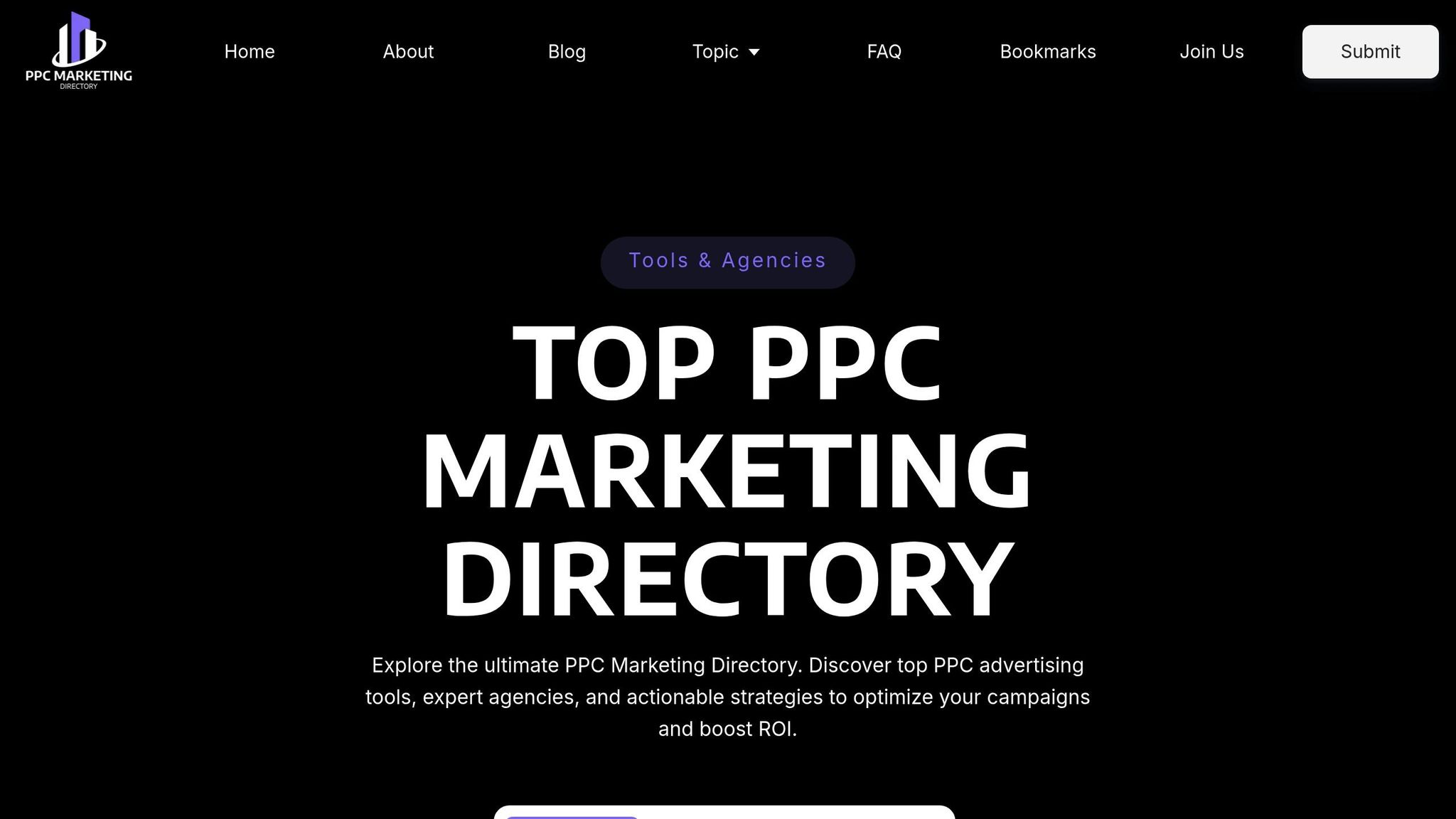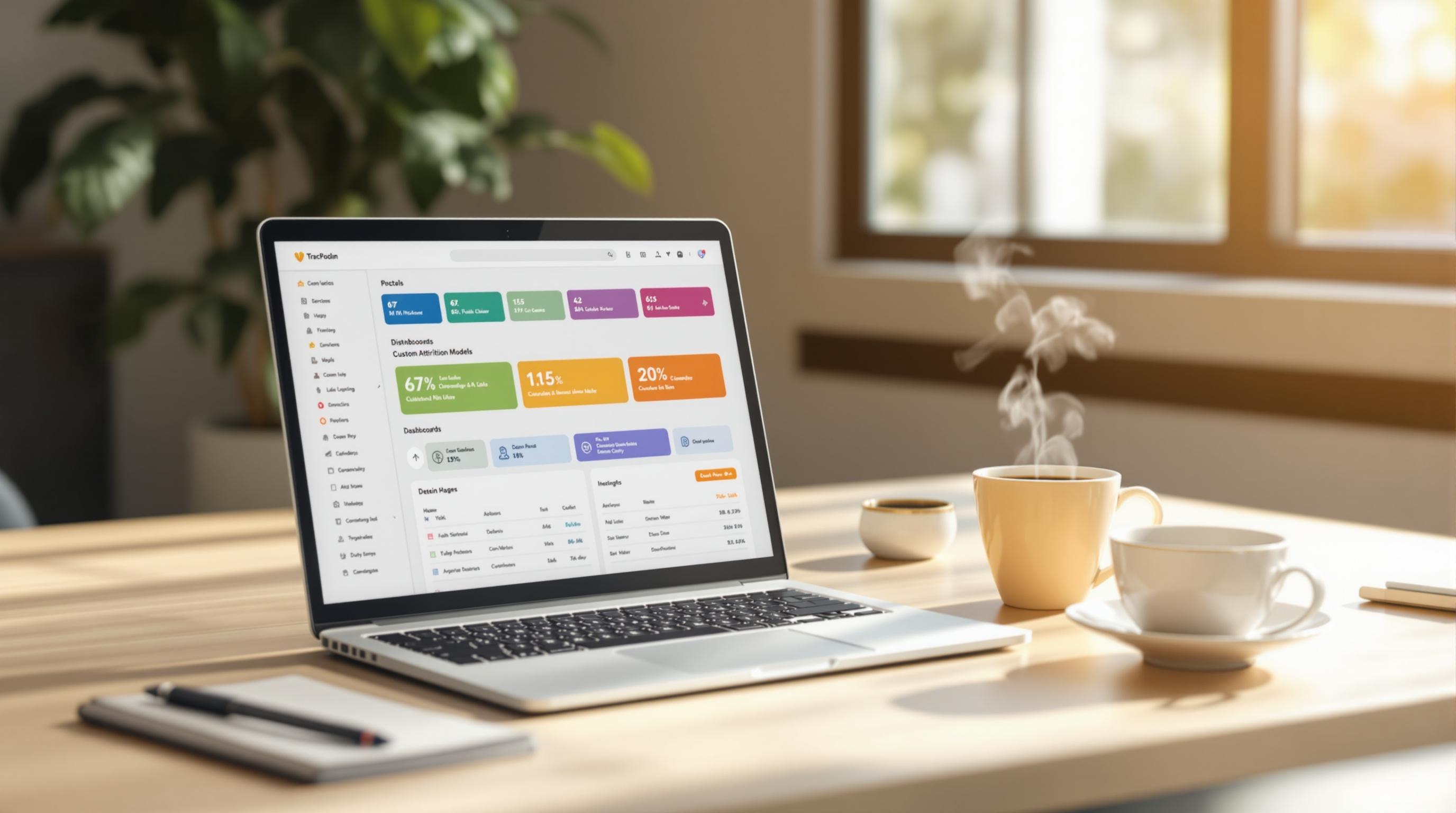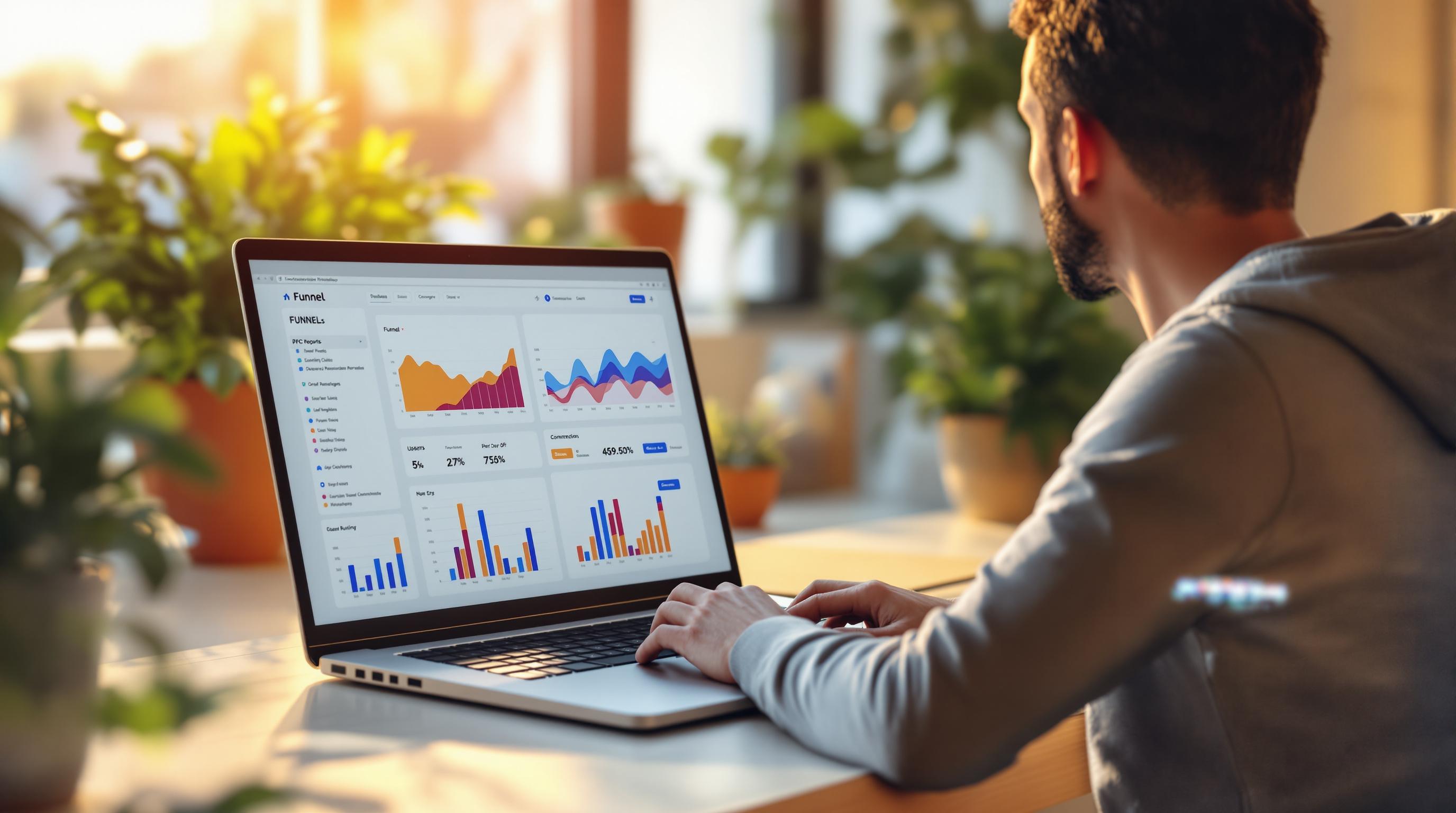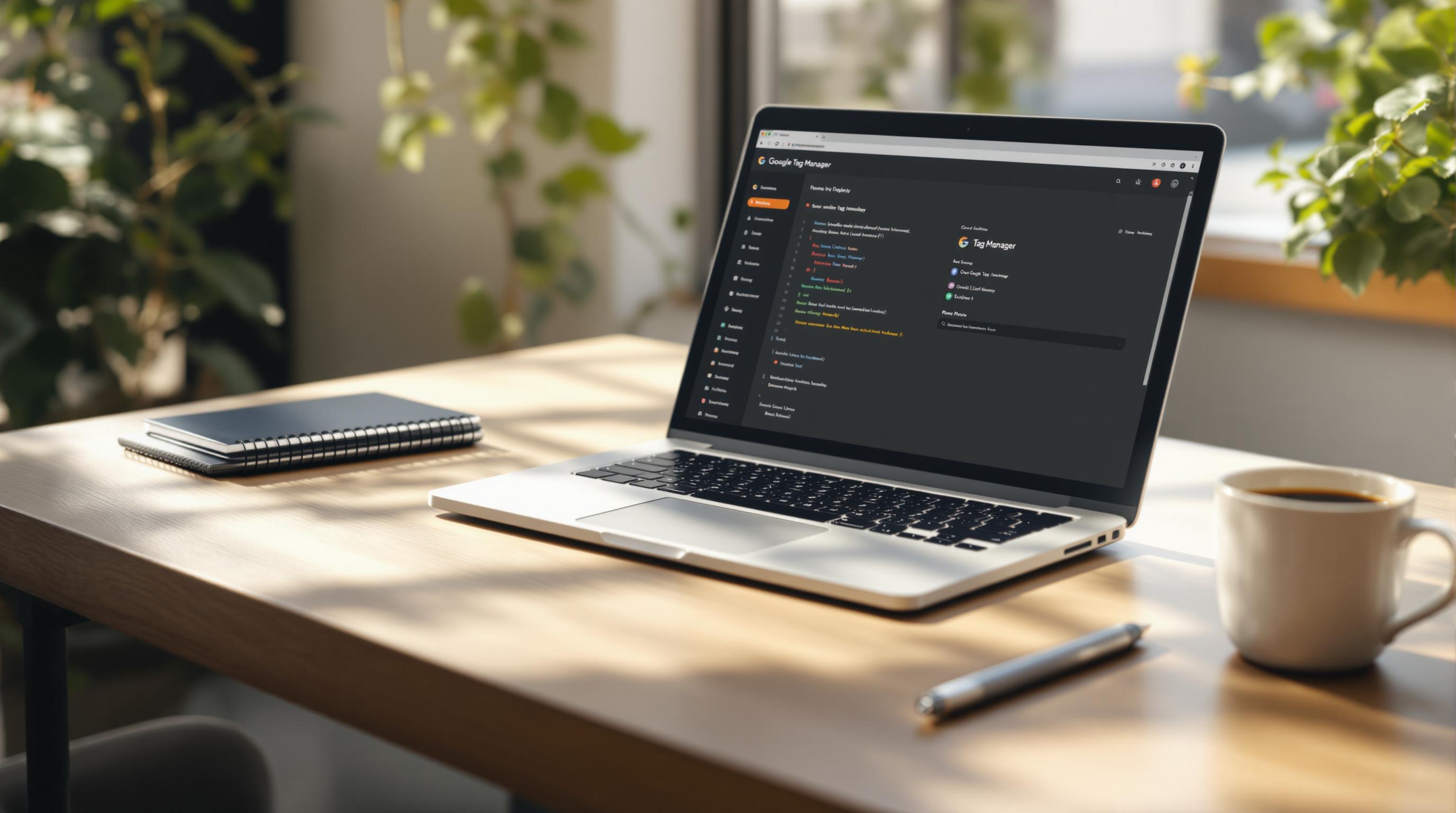AI and predictive analytics are reshaping PPC (pay-per-click) advertising, making campaigns smarter and more efficient. Here's the bottom line:
- AI automates tasks like bid adjustments, audience targeting, and ad optimization, saving time and improving results.
- Predictive analytics forecasts future trends, allowing marketers to anticipate changes and make informed decisions.
- Results show a 30% increase in ROI for agencies using AI tools and a 47% boost in forecasting accuracy with predictive analytics.
- AI tools like Google Ads, Microsoft Advertising, and Facebook Ads Manager offer features like automated bidding, audience segmentation, and dynamic creative testing.
- Challenges include over-reliance on automation, data quality issues, and budget mismanagement, but proper oversight and clear strategies can mitigate these risks.
AI and predictive analytics are no longer optional - they're essential for staying competitive in the fast-changing digital advertising landscape.
Using AI To Predict PPC Results
AI Tools That Automate PPC Campaign Tasks
AI has transformed how PPC campaigns are managed, making smarter decisions possible with less manual effort. Tasks like real-time bid adjustments and testing multiple ad variations, which used to take hours, are now handled seamlessly by AI. These systems continuously fine-tune campaigns, ensuring they run efficiently and effectively.
In a world where data is abundant, markets shift constantly, and audience behaviors evolve rapidly, automation isn't just helpful - it's necessary. AI's advanced capabilities have introduced features that are reshaping PPC management.
Main AI Features for Managing PPC Campaigns
One standout feature is automated bid management. AI tools analyze data like conversions, competitor activity, and user behavior to adjust bids instantly. Instead of reviewing campaigns a few times a day, these tools make constant micro-adjustments to maintain the best ad positions without blowing your budget.
Another game-changer is smart audience segmentation. AI digs into demographic data, browsing habits, purchase patterns, and engagement metrics to create highly specific audience groups. This precision helps uncover niche audiences that traditional methods might miss.
Dynamic creative testing simplifies A/B testing by automating the process. AI can test multiple headlines, descriptions, and images at once, quickly identifying which combinations perform best - far faster than manual split testing.
Budget optimization is another powerful tool. AI algorithms allocate funds across campaigns, ad groups, and keywords based on performance. They shift budgets from underperforming areas to those showing better results, ensuring every dollar works harder.
With keyword discovery and management, AI identifies new keyword opportunities, suggests negative keywords, and analyzes search term trends. By examining search queries, competitor data, and industry insights, these tools expand keyword lists to drive conversions while cutting down on wasted spending.
These features collectively enhance PPC strategies, making campaigns more efficient and effective.
Top AI Tools for PPC Automation
Several platforms have integrated these AI capabilities to help marketers maximize their advertising efforts.
Google Ads is a prime example, offering Smart Bidding strategies and responsive search ads. Its machine learning algorithms analyze multiple signals to optimize bids for each auction. Performance Max campaigns take it further by automating ad placements, audience targeting, and budget allocation across Search, Display, YouTube, and Shopping networks - all aligned with your conversion goals.
Microsoft Advertising (formerly Bing Ads) brings AI to the table with automated bidding strategies and dynamic search ads. It's particularly useful for B2B campaigns, where audience targeting needs to be more nuanced over longer sales cycles.
Facebook Ads Manager leverages machine learning for budget optimization and automatic placements. It identifies lookalike audiences and tailors ad delivery across Facebook, Instagram, and Messenger. Its dynamic product ads even customize content based on users' browsing and purchase behavior.
Amazon Advertising uses AI to optimize Sponsored Products and Sponsored Brands campaigns. Its algorithms assess purchase intent and product relevance, adjusting bids in real time to boost conversions for specific products and customer segments.
Third-party platforms like Optmyzr and WordStream also provide AI-powered solutions for managing campaigns across multiple channels. Features such as dayparting (adjusting bids based on the time of day), weather-based bid adjustments, and cross-platform budget management make these tools especially useful for agencies handling multiple clients.
For a comprehensive list of tools, the Top PPC Marketing Directory is a great resource. It helps marketers find the right automation solutions, whether they're managing local campaigns or large-scale enterprise initiatives.
Using Predictive Analytics to Improve PPC Results
Predictive analytics is a game-changer for PPC campaigns, working hand-in-hand with AI to boost decision-making. While AI takes care of repetitive tasks, predictive analytics steps in to forecast outcomes, giving marketers the insights they need to fine-tune their strategies.
This technology uses machine learning to dive deep into historical data, current trends, and user behavior patterns. Instead of reacting to changes after they happen, marketers can anticipate shifts and adjust their campaigns ahead of time. This proactive approach is especially handy during seasonal peaks, economic changes, or when rolling out new products.
Predictive analytics examines huge datasets - everything from click-through rates and conversion trends to external factors like holidays, weather, and competitor activity. These models uncover patterns that might go unnoticed by human analysts, delivering forecasts for key performance metrics. Let’s break down the main forecasting methods and how they help.
How to Predict Campaign Performance with Analytics
One of the most practical uses of predictive analytics in PPC is conversion forecasting. By analyzing past conversion data, seasonal trends, and audience behavior, these models can predict future conversion rates. With these insights, marketers can adjust bids in advance to maximize results.
Revenue prediction models take things a step further. They incorporate metrics like average order value, customer lifetime value, and purchase frequency to forecast return on ad spend (ROAS). This helps businesses make smarter decisions about how to allocate their budgets over time.
When it comes to audience behavior prediction, predictive models analyze user journey data - such as time spent on site, pages visited, and previous ad interactions. This helps identify users who are most likely to convert, allowing marketers to refine bidding strategies and tailor ad messaging for different stages of the customer journey.
Competitive intelligence forecasts are another powerful tool. These models monitor competitor activity, giving marketers a heads-up to adjust their strategies before competition heats up for high-value keywords.
Finally, seasonal trend analysis combines historical campaign data with external factors like holidays, weather, and economic conditions. For example, retailers can predict peak shopping times - like back-to-school season - and ramp up their campaigns at just the right moment.
Benefits of Predictive Analytics for U.S. PPC Marketers
For U.S.-based PPC marketers, predictive analytics offers more than just performance insights - it delivers real financial and strategic advantages.
One of the most immediate perks is cutting down wasted ad spend. By predicting underperforming keywords, audiences, or time periods, marketers can reallocate budgets more efficiently, avoiding the pitfalls of reactive decision-making.
Another major benefit is better targeting accuracy. Predictive models can zero in on high-value audience segments by spotting emerging behavior trends, helping marketers reach potential customers while keeping acquisition costs low.
Improved cash flow management is also on the table. Accurate ROI forecasts make it easier to plan for things like inventory, staffing, and overall business strategy. For e-commerce businesses, this can be a huge advantage.
Marketers can also gain a competitive edge by staying ahead of market shifts. Whether it’s boosting bids on valuable keywords before competitors catch on or scaling back in oversaturated areas, predictive analytics helps refine strategies for maximum impact.
Agencies, too, can benefit by offering clients accurate performance forecasts. This not only strengthens relationships but also highlights the agency’s strategic value through data-driven insights.
For those looking to get started, there are many predictive analytics platforms that integrate seamlessly with major advertising networks. These tools range from basic forecasting features to advanced systems capable of analyzing cross-channel performance.
For U.S. marketers, predictive analytics is especially useful during critical shopping periods like Black Friday, back-to-school season, and the holiday rush. By anticipating demand spikes, marketers can scale campaigns and allocate budgets with precision, ensuring they make the most of these high-stakes moments.
sbb-itb-89b8f36
Common Problems with AI-Powered PPC Campaigns
AI and predictive analytics have brought powerful tools to PPC campaigns, but they’re not without their challenges. To make the most of these technologies, marketers need to be aware of potential pitfalls and know how to address them. While earlier sections covered the benefits of AI, understanding its limitations is essential for balancing its use effectively.
One major concern is that unchecked AI systems can lead to costly errors. Problems like budget overruns or biased targeting can escalate quickly if marketers aren’t actively monitoring their campaigns.
Risks and Limits of AI in PPC
Over-reliance on automation is a common trap. While AI excels at processing data and making quick adjustments, it lacks the strategic insight and intuition that human marketers bring. Fully automated campaigns can overlook contextual factors that a human would easily catch.
Another issue is budget mismanagement. AI algorithms are designed to optimize for specific goals, but they don’t always account for broader business constraints. For instance, an AI system focused on maximizing conversions might hike bids across multiple campaigns, leading to unexpected overspending.
Data quality problems can also derail AI performance. These systems depend on accurate, up-to-date historical data. If the data is flawed - whether due to tracking errors, seasonal anomalies, or outdated information - the AI will make poor decisions. For example, if conversion tracking is set up incorrectly, the system might continue investing in non-performing keywords that appear profitable.
Algorithmic bias is another challenge. If historical campaign data contains demographic biases, AI may unintentionally reinforce these patterns, excluding valuable audience segments or perpetuating discriminatory practices.
The black box problem is particularly frustrating for marketers. AI systems often make decisions without explaining their reasoning. For example, an automated bidding strategy might suddenly increase spend on certain keywords, leaving marketers uncertain whether the change is beneficial or harmful.
Finally, market volatility can expose AI’s limitations. During unexpected events like economic downturns or major news stories, consumer behavior can shift in ways that historical data can’t predict. AI systems may continue optimizing based on outdated patterns, resulting in poor performance when quick adjustments are needed.
These risks highlight the importance of active oversight and thoughtful planning. Marketers who take a proactive approach can mitigate these challenges effectively.
Best Practices for AI Tools in PPC
To avoid common pitfalls, consider these strategies:
- Set strict budget controls: Align daily and monthly budgets with your overall marketing plan, and set up alerts to flag when spending nears its limits. A good rule of thumb is to allocate 80% of your budget to AI-driven campaigns, keeping the remaining 20% for manual adjustments or emergencies.
- Monitor performance regularly: Schedule daily reviews of key metrics like cost-per-click, conversion rates, and return on ad spend. While AI can handle many tasks, human oversight is essential for spotting unusual trends or errors.
- Ensure clean data: Regularly audit your conversion tracking and analytics setup to remove inaccuracies or outdated information. Clean up historical data by eliminating periods with tracking issues, misconfigured campaigns, or anomalies caused by external events.
- Diversify campaign structures: Rather than automating all campaigns, keep some under manual control and others partially automated. This approach provides a backup if AI performance falters and offers comparison data to measure effectiveness.
- Implement gradually: Start with smaller campaigns or low-risk keywords before rolling out AI features across your entire PPC strategy. This lets you identify potential problems early without risking your most critical campaigns.
- Set clear thresholds for intervention: Define specific performance metrics that trigger a manual review or pause automation. For example, you might suspend AI optimization if cost-per-acquisition rises by more than 25% over three days or if click-through rates drop below a set benchmark.
Comparison: Pros and Cons of Top AI Tools
Here’s a quick look at some of the leading AI tools for PPC and how they stack up:
| AI Tool | Key Strengths | Main Limitations | Best For |
|---|---|---|---|
| Google Ads Smart Bidding | Deep integration with Google, real-time auction optimization | Limited transparency, needs significant conversion data, aggressive budget use | Large campaigns with ample data |
| Microsoft Advertising AI | Strong LinkedIn integration, effective for B2B targeting | Smaller data pool, fewer integrations, limited advanced features | B2B campaigns and LinkedIn targeting |
| Facebook/Meta Advantage+ | Great for social media ads, creative optimization, audience insights | Reduced targeting precision due to privacy changes, limited to Meta platforms | Social media and brand awareness |
| Optmyzr | Comprehensive PPC management, multi-platform support, detailed reporting | Steep learning curve, extra cost, overwhelming for smaller businesses | Agencies managing multiple platforms |
| WordStream Advisor | Beginner-friendly interface, includes educational resources | Limited advanced features, focused on Google Ads, less suited for complex campaigns | Small to medium businesses new to PPC |
Each tool has its strengths and weaknesses. Google’s Smart Bidding offers advanced machine learning but can be unpredictable with budgets. Microsoft’s tools are ideal for B2B marketers but lack the data depth of larger platforms. Third-party tools like Optmyzr provide more control but require additional expertise and investment.
Choosing the right tool depends on your campaign size, complexity, and available resources. Larger organizations with dedicated PPC teams may benefit from advanced platforms, while smaller businesses might prefer simpler, more automated solutions.
For a deeper dive into these tools, check out the Top PPC Marketing Directory. This resource offers detailed comparisons and user reviews to help you find the best fit for your needs and budget.
What's Next: Future Trends and Recommendations
AI and predictive analytics are set to transform how PPC campaigns are managed. As these technologies continue to evolve, they’re reshaping how U.S. marketers approach paid advertising, making campaigns smarter, more efficient, and increasingly predictable.
How AI and Predictive Analytics Will Shape PPC Long-Term
Over the next five years, machine learning algorithms will become even better at understanding consumer intent. AI will take on tasks like adjusting bids in real time, factoring in market conditions and user behavior data to optimize performance automatically.
This evolution also ties directly into cross-platform integration and privacy-conscious targeting. AI tools are improving at managing campaigns across platforms like Google Ads, Microsoft Advertising, and social media simultaneously. This unified management approach ensures consistent messaging while fine-tuning ad spend across various channels.
With the decline of third-party cookies, first-party data targeting will dominate. Predictive analytics will leverage first-party information and contextual signals to identify high-value prospects. To adapt, marketers will need to strengthen their data collection processes and invest in tools like customer relationship management systems.
AI will also streamline campaign management in new ways, such as voice search optimization and instant ad creative adjustments. As smart speakers become more common in U.S. households, AI is adapting to handle conversational search queries, which differ from traditional text-based searches. Additionally, AI systems are now capable of testing and refining ad copy, images, and video content within hours, significantly reducing optimization time and improving ROAS.
The most effective PPC marketers will adopt a hybrid approach, combining human creativity with AI’s analytical power.
Using Resources Like Top PPC Marketing Directory

With the rapid growth of AI-powered PPC tools, navigating this landscape can feel overwhelming. The Top PPC Marketing Directory offers a practical solution for U.S. businesses looking to compare and choose the best tools for their needs.
This platform simplifies the process of discovering tools for campaign management, bid optimization, keyword research, and performance tracking - all critical elements of modern PPC strategies. Instead of spending weeks researching individual tools, marketers can quickly compare features, pricing, and user reviews in one place.
The directory’s comparison tools are especially helpful when evaluating AI platforms. Since different tools excel in specific areas - some specialize in Google Ads automation, while others focus on social media campaigns - these detailed comparisons help marketers make informed decisions based on their goals and budgets.
For agencies managing multiple client accounts, the directory highlights enterprise-level solutions designed to handle complex campaigns and reporting. Meanwhile, small businesses can find affordable options that include essential AI features without unnecessary complexity.
The platform also keeps marketers informed about new technologies and updates, ensuring they stay ahead as the AI landscape continues to evolve. With access to the latest information, businesses can adapt their strategies and maintain a competitive edge in the ever-changing world of PPC advertising.
FAQs
How can marketers maintain high-quality data when using AI and predictive analytics for PPC campaigns?
To ensure your PPC campaigns benefit from high-quality data in AI and predictive analytics, it's essential to focus on accuracy, relevance, and timeliness. Begin by using dependable methods for collecting data and conducting regular audits to catch and correct any errors or inconsistencies. Automated tools can simplify tasks like real-time validation and quality checks, helping to maintain the integrity of your data.
AI can also play a key role by identifying patterns and improving data quality through predictive analysis. By keeping a close eye on your data and refining it regularly, you'll enhance the precision of AI-generated insights, empowering you to make smarter decisions and scale your PPC campaigns effectively.
How can businesses avoid becoming too dependent on AI automation in their PPC campaigns?
To keep from depending too heavily on AI automation in PPC campaigns, businesses should make it a habit to conduct manual audits. These audits help ensure that the technology stays in sync with their overall goals and strategies. By doing this, companies can maintain control over campaign performance and avoid potential errors that automation might introduce.
Striking a balance between human oversight and AI tools is key to protecting a brand's voice, addressing specific market needs, and reducing risks like AI bias. On top of that, providing ongoing training for PPC managers on the latest AI advancements equips them to effectively monitor and tweak campaigns, ensuring strong performance while keeping a personal, human touch.
How will the end of third-party cookies affect the role of predictive analytics in PPC campaigns?
The end of third-party cookies is set to limit access to detailed behavioral data, making it tougher for marketers to target ads with the same accuracy. To adapt, businesses will need to prioritize first-party data - information gathered directly from their own customers - and lean more on AI-powered tools to bridge the gap.
In this shift, predictive analytics will be a game-changer. By leveraging advanced algorithms, it can analyze alternative data sources and spot trends. These insights will enable marketers to continue running personalized and effective PPC campaigns, even as digital advertising becomes more privacy-conscious.


